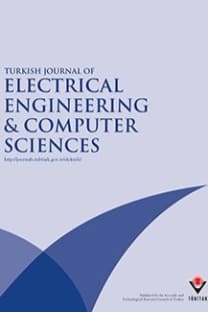Design and control of a visual servomechanism for automating corneal cross-linking treatment in keratoconus patients
Keratoconus treatment, eye tracking, system identification, digital PID design, corneal cross-linking
Design and control of a visual servomechanism for automating corneal cross-linking treatment in keratoconus patients
Keratoconus treatment, eye tracking, system identification, digital PID design, corneal cross-linking,
___
- Figure 16. Processed frame under UVA irradiation.
- Figure 17. Field experiment eye detection.
- The developed prototype of the system is complete and working efficiently. Moreover, based on opinions
- of our medical advisors, obtained response characteristics satisfy the demands of the CCL treatment. As far
- as we know, this is the only automated CCL treatment system available in the literature; because of this, no
- performance comparison could be performed. As a future work, we plan to improve the system with other sensors. With the addition of encoders,
- additional and more accurate information to control position data can be obtained. Furthermore, this will
- provide a better control ability to the system. Moreover, we plan to implement an IR camera in the system.
- The pupil (black part of the eye) can easily be separated under IR LED illumination and the IR cameras would
- give clearer visual data for the image processing algorithm to work with. In order to eliminate the calibration
- step for each patient, a sensor will be used to estimate the correct distance to the patient’s eye. Alternatively,
- the size of the detected eye could as well be used within the vision algorithm to perform self-calibration. One
- other planned addition to the system is a single-board vision computer to eliminate the dependence on a PC in the field. Due to the nature of the treatment, the system needs to track only a single eye. For those patients
- requiring treatment for both eyes, an alternative system can be developed. A system that can track two eyes
- at the same time and compensate for movements would be a nice improvement. The real success of the prototype can only be seen by a comparable clinical study, where the treatment
- with the proposed automated system will be compared to that of the classical manual treatment in a medical
- setting. This will be the topic of further research, and has significant importance in refractive surgery. The
- developed automated vision-based system will also give a chance to future medical clinical studies to improve
- their results by eliminating human errors involved.
- ISSN: 1300-0632
- Yayın Aralığı: Yılda 6 Sayı
- Yayıncı: TÜBİTAK
The detailed analysis of rate equation roots of BH-laser diode using Volterra series
Remzi YILDIRIM, Ahmet KARAARSLAN
Rana KADIOĞLU, Yaser DALVEREN, Ali KARA
Efficient ID-based authentication and key agreement protocols for the session initiation protocol
Hacı Hakan KILINÇ, Yolguly ALLABERDİYEV, Tuğrul YANIK
A fault detection, diagnosis, and reconfiguration method via support vector machines}
Arsalan NAJAFI, Mohsen FARSHAD, Hamid FALAGHI
Bandwidth extension of narrowband speech in log spectra domain using neural network
Sara POURMOHAMMADI, Mansour VALI, Mohsen GHADYANI
Epilepsy diagnosis using artificial neural network learned by PSO
Nesibe YALÇIN, Gülay TEZEL, Cihan KARAKUZU
Majid VALIZADEH, Mohammad Reza FEYZI, Ebrahim BABAEI, Mehran SABAHI
Continuous-time Hopfield neural network-based optimized solution to 2-channel allocation problem
